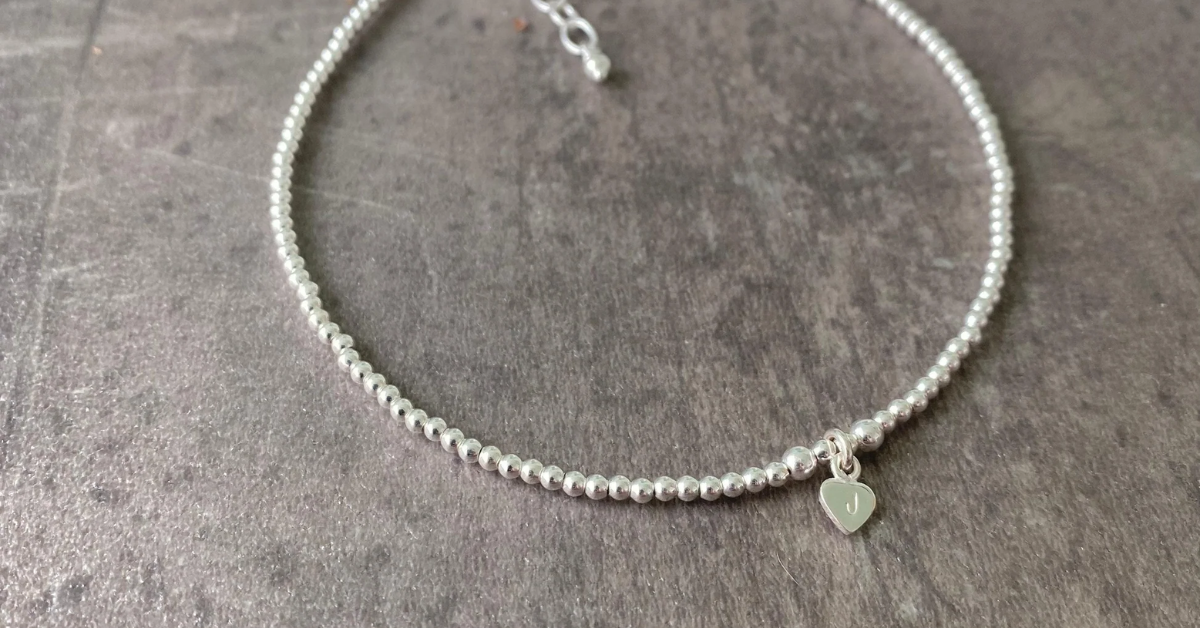Anklets may be small, but they carry deep meaning. For many, they are not just another piece of jewellery—they’re rich in symbolism, tradition, and personal significance. If you've ever worn an anklet or considered it, you might have asked yourself: What does this actually mean?
This blog breaks down the true symbolism of anklets, how they’ve been worn around the world, and what they might mean for you today. From ancient rituals to modern fashion, anklets are more than just accessories—they’re silent storytellers.
Anklets Meaning
The meaning of anklets can vary depending on context. In general, an anklet represents:
-
Femininity and grace
-
Love and relationships
-
Personal expression
-
Spiritual protection
In many cultures, anklets have been used to symbolise identity, social status, marital status, or even divine connection. Unlike bracelets or rings, which are more visible, anklets are slightly hidden—making them a subtle yet powerful form of expression.
Some people wear anklets for spiritual or protective reasons. Others use them as flirtatious hints of interest or to complete a look with confidence. Your anklet can mean anything you want it to, but its roots go deeper than most realise.
Cultural Meaning of Anklets
India
In Indian culture, anklets (called “payal” or “pajeb”) are significant in both religious and social contexts. Brides traditionally wear ornate anklets as part of their wedding attire, often symbolising marital status and bringing luck to the home.
Worn on both legs, they often jingle as the woman walks, believed to ward off evil spirits and signal her presence in the household. Some anklets are gifted to newborns as blessings or used in classical Indian dance as rhythm instruments.
Egypt
Ancient Egyptians used anklets as a display of wealth and status. The elite often wore gold or silver anklets adorned with charms. On the other hand, women of lower classes wore leather or simple metal anklets. In both cases, anklets revealed not just beauty but identity.
Africa
Across various African cultures, anklets hold tribal significance and are used in ceremonies, rites of passage, or traditional dress. They often symbolise fertility, womanhood, or spirituality. Certain tribes use anklets to denote stages of life or readiness for marriage.
Western Culture
In Western fashion, anklets became popular in the 20th century as a bohemian or beach-inspired accessory, especially among women. Here, the meaning is more personal—used to reflect freedom, sensuality, or simple fashion preferences.
Today, Western interpretations may borrow from global traditions, but anklets are largely worn as a fashion statement or spiritual charm.
Symbols of Anklets
Anklets can represent:
-
Romantic availability (especially when worn on the left ankle)
-
Sensuality or flirtation
-
Personal identity and freedom
-
Cultural heritage
-
Spiritual protection (when adorned with protective charms or crystals)
Charms attached to anklets can amplify their symbolism. For example:
-
Hearts for love
-
Evil eyes for protection
-
Moons and stars for intuition and guidance
-
Initials or names for personalised significance
The position of the anklet also matters to some. As discussed in previous blogs, the left ankle is often associated with receiving energy or romantic openness, while the right ankle may represent action or giving.
Symbols of Anklets in Other Countries
Thailand
In Thailand, anklets are often used in Buddhist customs. Sometimes, they’re worn for spiritual reasons or to protect the wearer from harm. While not as common in everyday wear, they can still be seen in traditional or ceremonial dress.
Middle Eastern Regions
In parts of the Middle East, anklets were once regarded as symbols of femininity and social status. Today, they are sometimes included in belly dancing costumes or worn as sensual jewellery. However, in more conservative settings, visible anklets might be discouraged or interpreted differently.
Caribbean and Latin America
In many Afro-Caribbean and Latin cultures, anklets are popular summer accessories, but they also carry cultural importance in rituals or religious practices. Some wear anklets as part of Santería or spiritual cleansing traditions.
Conclusion
So, what is an anklet a symbol of? The answer is layered.
An anklet is a fusion of history, spirituality, fashion, and emotion. It can be a mark of beauty, a spiritual tool, or simply a stylish addition to your look. Across cultures and generations, anklets have told stories without a single word.
Whether you wear it for tradition, expression, or trend, the symbolism of your anklet is defined by you. And that makes it all the more meaningful.
FAQs
What does it mean when a woman wears an anklet?
It can symbolise femininity, confidence, romantic interest, or cultural tradition. The meaning often depends on the wearer’s intent or cultural background.
Is there a spiritual meaning to anklets?
Yes. In many traditions, anklets are believed to offer protection, balance energy, or symbolise grounding. Some wear anklets with specific spiritual charms for this reason.
Do anklets mean you're in a relationship?
In some cultures, especially in India, anklets can be worn by married women as part of their bridal jewellery. However, in modern Western culture, anklets rarely indicate relationship status.
Which leg should I wear my anklet on?
There’s no strict rule, but the left leg is often associated with receiving energy or openness in love, while the right leg is linked to action or confidence.
Are anklets culturally appropriate to wear?
If worn with respect and awareness, anklets can be a beautiful way to appreciate culture. However, avoid using sacred symbols or traditional items in ways that distort or trivialise their meaning.
